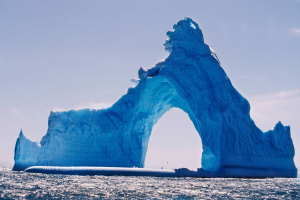The European gas market, which has traditionally been heavily reliant on imports, has confronted a host of challenges in recent years while changing its supply chain logistics. The decline in Russian pipeline gas imports in 2021 and 2022 sent gas prices to record highs. But in 2023 the market has adapted to the new conditions, putting prices on a sustained downward path, although they remained overly volatile. In February 2024, Dutch TTF spot prices – the benchmark for the European market – dipped below $300 per thousand cubic metres, showing a 10-fold decline from the peak of the 2022 crisis (at the beginning of May the price was $330).
Uncertainty persists as to the sustainability of the new equilibrium and how much of it is due to the warm winter. Having said that, the European market has largely successfully navigated the 2023–2024 heating season. Given the current high level of reserves in underground storage facilities (about 62%), the EU may well count on a loss-free heating season next year.
Even though Europe can safely put most of the fallout from the gas crisis behind it, this crisis has had a long-term discouraging effect on gas consumption.
Consumers, especially in the industrial and housing and utility sectors, are making strong efforts to cut consumption on the understanding that gas is a risky energy source. Equally impactful are EU policies aiming to boost the share of renewables and reduce greenhouse gas emissions, affecting the long-term prospects of gas from the standpoint of consumers. Notwithstanding the sustained decline in prices, the EU cut its gas consumption by 7% in 2023, after a collapse of 14% in 2022, meaning that the demand dropped by over 100 billion cubic metres in two years.
The drop in consumption was the major factor behind the replacement of Russian supplies, which in 2021 exceeded 170 billion cubic metres (pipeline and liquefied natural gas collectively). The second driver of replacement was the growth of liquefied natural gas (LNG) imports from other countries in 2022, with the US emerging as the core supplier of additional volumes. The future European gas market stability will be determined by how long these factors remain at play.
The current IEA mid-term forecast predicts that European demand will grow by 2% in 2024, but long-term consumption is set to be flat at best. Even the most optimistic scenarios do not assume that demand will return to the 2021 level, meaning that the structural changes that emerged between 2022 and 2023 are here to stay, at least partially, over the background of lower gas supplies.
US LNG will remain available to the European market. The US is on track to open new LNG facilities in 2025 equivalent to some 32 million tonnes of output in an effort to expand its export potential. The plants under construction will be exempt from the temporary pause on pending decisions on LNG export licences, in effect since 26 January 2024, leaving the market unaffected in the 2024 to 2025 period.
Russia still a supplier
For all the drastic decline in volumes, Russia remains a supplier of gas to the EU. Our calculations show that Russia supplied 44 billion cubic metres of gas in 2023, of which LNG accounted for 40% and pipeline gas made up the remainder. The shipping route is either transit through Ukraine (to Slovakia, Austria, Slovenia and Italy) or the Turkish Stream gas pipeline (to Romania and Greece). Hungary is using both options.
As before, Slovakia is the distributor of EU-bound Russian pipeline gas, given that the main route of gas supply runs across its territory: from Ukraine to Austria, Hungary, Slovenia, Croatia and Northern Italy. Around 20–30% of the Russian gas supplied to Slovakia is consumed domestically. Austria also remains dependent on Russian pipeline supplies, annually consuming 8–9 billion cubic metres of gas, of which our estimates show Russian exports likely make up 5–6 billion cubic metres.
Hungary is now the only EU country to which Russia still supplies gas simultaneously via two routes: through the Balkan Stream from Serbia (a branch of the Turkish Stream) and in transit through Ukraine. However, the guaranteed annual volume of supplies will be only about 4.5 billion cubic metres over the next few years, in line with the 15-year contract signed in 2021.
Although the overall European dependency on gas supplies from Russia has declined, Slovakia, Austria, Hungary and Italy are countries most interested in continued Russian exports. Alternative supply options for them are not impossible but would come at immense costs.
Ukrainian transit
With about half of Russia’s pipeline gas bound for the EU passing through Ukraine, the future of these shipments is predicated on the accessibility of the route, among other factors. Our estimates suggest that Russian gas supplies through Ukraine totalled 13.5 billion cubic metres in 2023.
The current transit contract – the legal framework for the ongoing gas supplies through Ukrainian territory – will expire (link in Russian) in late 2024. Ukrainian authorities have given multiple warnings that they do not intend to extend or sign a new contract, but they are ready to ensure the continuity of transit via the mediation of the EU.
Economic logic suggests that the parties involved (several EU countries, Russia, and Ukraine) have an interest in the continuation of supply beyond 2024, since Slovakia, Austria and Italy are recipients of the Russian gas travelling via this route and have no readily available alternatives, Russia is unable to redirect these volumes to other markets, and Ukraine receives transit payments.
The parties could potentially agree on several options to continue the transit. The easiest option would be to commit to short-term reservations of Gazprom’s volumes for Ukraine’s transportation system. A more complex option involves changing the contracts in place and moving delivery points to the eastern border of Ukraine. In this case, transit and support costs would fall on European importers. Gazprom, which was previously against such proposals, may well find this option acceptable given the circumstances. From the economic point of view, both Russia and the EU stand to benefit from continued transit, but further developments will be driven by politics.

.jpeg)





